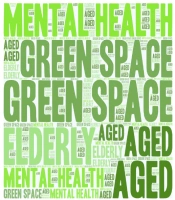Dear Editor,
The World Health Organization defines health as complete physical, mental, and social well-being, not merely the absence of disease or suffering. Health is a positive concept with physical, mental, emotional, spiritual, occupational, and social dimensions, emphasizing social and personal resources in addition to physical capacity. Hence, human health and the quality of the environment have always been discussed in urban issues (1).
However, cities continue to develop in abnormal conditions, and governments have failed to provide health and well-being for their residents at exorbitant costs (2). An age-friendly city is defined as a place that encourages active aging by optimizing opportunities for health, participation, and safety to enhance the quality of life as people age. It would help to strengthen the external resources and improve their continuity, resulting in better mental health outcomes (3).
In fact, urban spaces become polluted and stressful environments due to congestion, and at the same time, vulnerable and low-income groups are also growing or migrating from small and sparsely populated areas to dense areas and large cities. Thus, one of the basic paradigms in urban planning is the issue of population aging and urbanization, because the number of people aged 60 and over is also increasing due to the expansion of cities (4). For example, according to current forecasts, the world’s elderly population will increase to about 22% in 2050, most living in urban areas. In Iran, this trend has increased, and the country’s elderly population will increase from about 7.5% in 2006 to more than 22% in 2050 (5).
The elderly people are among the vulnerable citizens. If the urban spaces are adapted for these people, it will have a positive consequence for other sections of the society as well. However, the elderly, like most vulnerable groups such as children and the disabled, are under a great deal of stress for a variety of reasons, which may lead to their isolation. Although mental illness is ranked the eighth most common disease in Iran (6), it has many social and cultural consequences, and many Iranian families have little resistance to it. Hence, this group needs special spaces and facilities to strengthen social and emotional relationships and to be able to adapt to new conditions, and improve their mental health (7). According to numerous studies, natural and pristine environments in cities, especially parks that have good social and psychological functions, will be able to play this role well and restore vitality and social and geographical mobility to the elderly (8). This seems necessary for the elderly due to their special physical, mental, and social conditions because it solves some of the social and family problems such as sending the elderly to out-of-family settings, such as nursing homes; it also significantly reduces the cost of their health (9).
If the mental health of the person is maximally compatible with the world around him/her, it will lead to happiness and effective perception of the elderly. Healthy and lively environments are considered as one of the pillars of mental health, especially for the elderly, because in such environments they can spend their leisure time in a useful and effective way and communicate with old friends and colleagues (10). In such environments, the elderly, by establishing healthy and constructive communication with their peer groups, are able to acquire the mental talent to coordinate the pleasure of life, to work effectively and be flexible in difficult situations, and be able to regain their balance and practice (11).
Numerous studies have shown that going to parks greatly reduces stress and nervous tension. According to some research, frequent visits to parks and healthy spaces provided intellectual activities, freshness, and a sense of peace and comfort to the citizens. Harting et al. and Kuo et al. (12, 13) reported that the elderly using open spaces and parks had higher physical and mental health than others. Another study found a significant relationship between the use of parks and the health of people, especially the elderly, so that those regularly going to the parks in the neighborhood were in a higher physical and mental health than others. Bixler and Floyd found that those who took advantage of natural environments with more vegetation and water were calmer and had lower levels of stress (14). This feature is especially important in urban areas where more social and psychological stress and tension is observed. Natural elements and standard green spaces provide the basis for many social capabilities that, along with beauty, have positive psychological and health effects on the lives and activities of all citizens, especially the elderly (15). According to the existing evidence, nature can encourage humans to make more use of open spaces, thereby providing greater social unity and interaction between neighbors (7, 16).
Therefore, if urban parks have appropriate and standard functions and the elderly can use these spaces with the shortest distance from home and with minimal effort, this can improve their mental and physical health. It can also reduce a lot of individual and social costs and help achieve a healthy society based on sustainable development.
